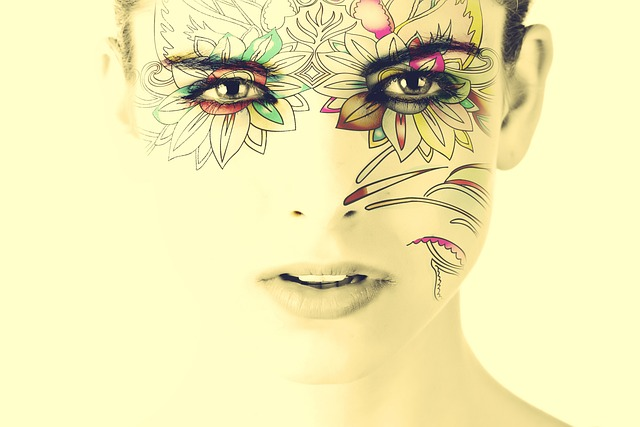From ancient Egyptian mummies to modern-day tattoo shops, tattoos have been a fascinating and significant part of human culture for thousands of years. With a rich history spanning different civilizations, styles, and techniques, these permanent marks on our skin have served as symbols of identity, expression, and even taboo. So, let’s embark on a captivating journey through the history of tattoos: their origins, evolution, cultural significance, and notable styles and trends.
Short Summary
- Tattooing has ancient roots in many cultures, used for religious worship to cultural identity.
- Modern tattoo shops and artists have revolutionized the body art world with a wide variety of styles & designs.
- Tattoos are now widely accepted as a form of self-expression, allowing people to express their beliefs & affiliations uniquely.
Ancient Roots of Tattooing

Tattooing has left its mark on various ancient cultures across the globe, including:
- Egypt
- Greece
- Rome
- Celtic societies
- Indigenous societies
These civilizations developed their unique styles and meanings behind their tattoos, often using them as an integral part of religious worship and cultural identity.
Tattoos have been used to signify status, mark rites of passage, and even as tattoo marks for various purposes throughout history.
Ancient Egyptian Tattooing
Ancient Egyptian tattoos were believed to serve spiritual and protective purposes. Intricate designs featuring gods, animals, and symbols adorned the skin of ancient Egyptians, reflecting their religious beliefs and customs.
Some of the earliest evidence of tattooing can be found on tattooed mummies, dating back over 4,000 years ago to the time of the great pyramids in Egypt.
Tattoos in Ancient Greece and Rome
In contrast to ancient Egypt, tattoos in ancient Greece and Rome, home to the ancient Greeks, were often used as a means of identification for slaves, criminals, and soldiers. These marks served as a form of communication and a sign of punishment and disgrace in the Greco-Roman culture.
However, as we will see later on, modern tattoos have come a long way from their punitive origins, gaining widespread acceptance and popularity.
Celtic and Indigenous Tattoo Traditions

Celtic and Indigenous tattoo traditions are known for their intricate designs and symbols representing nature, spirituality, and tribal identity. In Celtic culture, warriors would often get tattoos as symbols of strength, protection, and to show off their battle successes.
Indigenous peoples from various parts of the world also used indigenous tattooing to mark significant life events and accomplishments, further emphasizing the cultural significance of this art form.
Evolution of Tattoo Artistry
The art of tattooing has evolved significantly over time. This evolution can be traced back to the Renaissance period, when explorers encountered tattooed indigenous peoples and brought the practice back to Europe. Since then, modern tattoo shops and artists have emerged, offering a wide range of styles and designs to cater to diverse tastes and preferences.
Let’s delve into the milestones in the evolution of tattoo artistry.
The Renaissance of Tattooing
During the Renaissance, there was a resurgence of interest in tattooing. Explorers encountered tattooed indigenous peoples in their travels and brought the practice back to Europe, sparking curiosity and fascination with this ancient art form.
This renewed interest led to the development of new tattooing techniques and tools, paving the way for the modern tattoo industry as artists practiced tattooing with precision and skill.
Modern Tattoo Shops and Artists
Modern tattoo shops and the tattoo artist profession have revolutionized the world of body art. Skilled and creative, they provide a wide range of styles and designs to suit individual preferences. Tattoo artists are now recognized as true artists, with their work exhibited in galleries and a thriving sense of community within the industry, including at their local tattoo shop.
The rise of modern tattoo shops and artists has contributed to the growing acceptance and mainstream appeal of tattoos. This has led to a greater variety of designs and styles, as well as a more positive attitude.
Innovations in Tattoo Techniques and Designs
Innovations in tattoo techniques and designs have led to:
- More intricate, colorful, and personalized tattoos
- Robotic tattoo artists
- Futuristic tattoo technology like interactive and digital tattoos
- The development of new tattoo inks
These are just a few examples of the advancements in this art form.
Additionally, microneedle tattooing techniques have emerged, offering a less painful and faster alternative to traditional methods.
Cultural Significance of Tattoos

Tattoos hold immense cultural significance, serving as a form of identity and expression across different societies. However, they also face taboos and stigmas in various cultures, often being associated with criminality, deviance, or lower social status.
Let’s explore the multifaceted cultural significance of tattoos and how they continue to evolve in the modern world.
Tattoos as Identity and Expression
Tattoos can represent personal identity, beliefs, and affiliations, allowing individuals to express themselves through body art. They can be used to mark special moments, show loyalty to a group, or share personal beliefs. Many people choose to wear tattoos as a unique form of self-expression.
As society becomes more accepting of tattoos, they continue to gain popularity and serve as a powerful form of self-expression.
Tattoo Taboos and Stigmas
Despite their popularity, tattoos have faced taboos and stigmas throughout history. They have often been associated with criminality, deviance, or lower social status in various societies.
However, as tattoos become more mainstream and accepted, these stigmas are slowly fading away.
The Rising Popularity of Tattoos
The rising popularity of tattoos has led to greater acceptance and mainstream appeal. An estimated 40% of Americans now have at least one tattoo, showcasing the diverse range of styles and designs available.
This increasing popularity has resulted in more people embracing body art as a form of self-expression and challenging societal norms.
Notable Tattoo Styles and Trends

From traditional and tribal styles to modern and experimental tattoo designs, tattoos come in a wide variety of styles and trends. These styles often reflect the cultural, historical, and personal significance of tattoos, as well as the evolving techniques and materials used in their creation.
Let’s take a closer look at some of the most notable tattoo styles and trends.
Traditional and Tribal Styles
Traditional and tribal tattoo styles often feature bold lines, black ink, and designs inspired by cultural and historical symbolism. Polynesian, Maori, Samoan, Hawaiian, and Japanese tattoos are just a few examples of the rich and diverse range of traditional and tribal tattoo patterns that have been practiced for centuries.
These tattoos serve as a connection to ancestral roots and a way to maintain cultural practices.
Word Tattoos and Script
Word tattoos, also known as word tattoo designs, allow individuals to express themselves through meaningful quotes, names, or phrases. These tattoos can be written in a variety of languages and fonts, such as Latin, Greek, and Chinese, and they often hold deep personal significance for the wearer.
As a popular and versatile style, word tattoos and script continue to gain popularity among tattoo enthusiasts.
Modern and Experimental Styles
Modern and experimental tattoo styles push the boundaries of body art, incorporating new techniques, materials, and designs to create unique and innovative tattoos. Artists who create tattoos in these styles often explore watercolor tattoos, 3D tattoos, and glow-in-the-dark tattoos.
These cutting-edge styles challenge traditional notions of tattooing and showcase the limitless possibilities of this art form.
Facial Tattoos: A Unique Expression

Facial tattoos offer a unique form of expression, with both traditional and modern approaches to this bold form of body art. Although facial tattoos have been practiced in various cultures for centuries, they have gained popularity in recent years among individuals seeking a distinctive way to express themselves.
Let’s explore the traditional and modern aspects of facial tattoos.
Traditional Facial Tattooing
Traditional facial tattooing has been practiced by various cultures for centuries, often serving as a rite of passage or a symbol of status and identity. For example, Maori culture in New Zealand and the Ainu people of Japan have used facial tattoos to signify beauty, social status, and adulthood.
These traditional facial tattoos hold deep cultural significance and help preserve the rich heritage of their respective societies.
Modern Facial Tattoos
In recent years, modern facial tattoos have gained popularity among some individuals, often featuring small, minimalist designs or bold statements that challenge societal norms. These tattoos can be a powerful form of self-expression and identity, although they may also carry potential consequences, such as affecting job opportunities or perceptions of professionalism.
Nevertheless, modern facial tattoos continue to push the boundaries of body art, reflecting the evolving nature of self-expression in today’s world.
Summary
Throughout history, tattoos have served as a powerful medium for self-expression, identity, and cultural significance. From their ancient origins in Egypt, Greece, Rome, and the Celtic and Indigenous societies to the modern and experimental styles of today, tattoos have evolved and diversified over time. As we continue to embrace this unique art form, tattoos will undoubtedly remain an integral part of human culture and self-expression for generations to come.
Frequently Asked Questions
Where did tattoos originally come from?
Tattoos have been around for at least 12,000 years – with tools for creating tattoos being found in prehistoric sites across France, Portugal, and Scandinavia, and the oldest physical proof of tattoos on a mummy from the Alps.
This shows that tattoos have been around for a very long time, and have been used for a variety of purposes. They have been used for spiritual and religious purposes, as well as for decorative and aesthetic purposes. They have also been used to mark important events in a person’s life, or to commemorate a loved one.
When were tattoos invented and why?
Tattoos have been around since at least 2100 BC, when they were used as a way to identify criminals and bandits in China. This ancient practice was primarily done on the forehead, back, and chest.
Who first invented tattoos?
It is believed that tattooing was first practiced by the indigenous Austronesian people and later adopted by ancient Egyptians. The oldest preserved tattoos come from Otzi the Iceman, a 5,300-year-old mummified body discovered in 1991.
What culture did tattoos first?
Tattoos were first seen on female Egyptian mummies dating back to around 2007.
What was the purpose of tattoos in ancient Egypt?
Tattoos in ancient Egypt were used for spiritual and protective purposes, depicting gods, animals, and symbolic designs to ward off evil.
They were believed to have magical powers and were used to mark important events in a person’s life, such as marriage, childbirth, and death. They were also used to signify social status and rank.






